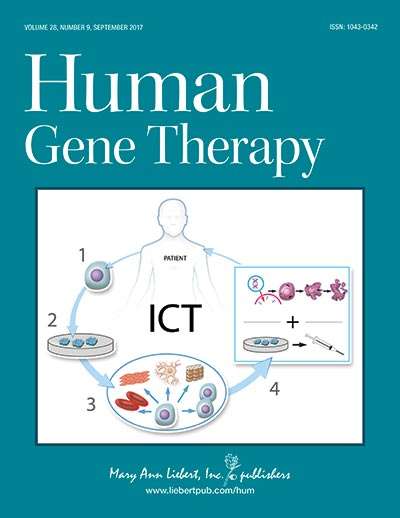Credit: Mary Ann Liebert, Inc., publishers
Researchers added a scaffold/matrix attachment region (S/MAR) to a conventional adeno-associated virus (AAV) vector used for gene transfer, and the modified vectors were able to establish colonies and maintain long-term transgene expression in HeLa cells, as reported in Human Gene Therapy.
Hildegard Büning, PhD, Hannover Medical School, Germany and colleagues from University of Witten/Herdecke and University of Cologne, University Hospital Cologne, and German Center for Infection Research, Germany, and Cairo University, Egypt coauthored the article entitled " S/MAR Element Facilitates Episomal Long-Term Persistence of Adeno-Associated Virus Vector Genomes in Proliferating Cells." This novel approach, if applicable in other cell types, could help overcome the limitation of being able only to use AAV vectors for gene transfer to proliferating cells. In an unexpected finding, the researchers also showed that even AAV vectors lacking the S/MAR element were able to establish stable transgene-expressing colonies in HeLa cells.
"AAV vectors have so far been most useful in terminally differentiated cells, like neurons and photoreceptor cells, but this advance could greatly expand the utility of AAV vectors in actively dividing cells," says Editor-in-Chief Terence R. Flotte, MD, Celia and Isaac Haidak Professor of Medical Education and Dean, Provost, and Executive Deputy Chancellor, University of Massachusetts Medical School, Worcester, MA.
More information: Claudia Hagedorn et al, S/MAR Element Facilitates Episomal Long-Term Persistence of Adeno-Associated Virus Vector Genomes in Proliferating Cells, Human Gene Therapy (2017). DOI: 10.1089/hum.2017.025
Journal information: Human Gene Therapy
Provided by Mary Ann Liebert, Inc






















